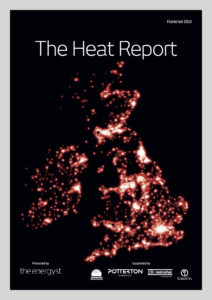
Green infrastructure funds like the look of heat networks, says Amber Infrastructure’s Jenny Curtis. But poor data, planning and leadership can undermine otherwise viable projects
Amber Infrastructure manages a listed infrastructure fund as well as unlisted funds on behalf of government entities in energy efficiency, green energy and regeneration – including the mayor’s London Energy Efficiency Fund. It has appetite for green projects that would not ordinarily attract standard market investors.
Within heat, Amber primarily invests in CHP and district heating, taking particular interest in projects that can be moved “from their current field, where they require a grant or potentially a local authority guarantee, into a standard investment”, says Amber Green director Jenny Curtis.
She says the difference between success and failure is all in the detail – which the public sector and its consultants must ensure is up to scratch.
“They need to be properly scoped. We see a lot of slightly unrealistic feasibility studies in terms of the real, underpinning financial economics. They need to be schemes that are driven as much by the carbon credentials as they by the cold hard numbers around demand and capex costs.”
While it may be desirable to oversize networks and scope-in potential future offtakers, “that can cause you real issues up front in terms of getting a project that is deliverable,” Curtis warns.
But a project with all the necessary background data can go “a huge way” towards securing funds, she says.
“The more data you have, the more you can derisk it. We are not asking for everything to be sewn up, but you need to know which risks you are being asked to take on.”
Such as?
“Right down to basic things like how many units are there will be and when they will be built; what is in the terms of existing leases about provision of heat. That kind of thing makes a big difference and is the kind of work the public sector must undertake upfront to get these schemes together.”
Low carbon heating schemes should not necessarily be led by low carbon experts, but by experienced project managers, says Curtis.
“You need someone to take the lead. I don’t think that is the carbon people. It should be the people with commercial expertise.” That may be the finance director, it may be the head of housing. “But you need a strong sponsor who understands that a large district heating scheme has the same core principles as building a new housing estate, school or civic centre,” Curtis says.
Provided strong project managers are in charge, hired help will fill in the gaps, she adds, but local authorities should resist going it alone with free advice from, for example, government bodies. You get what you pay for, Curtis suggests.
“It is important to work with appropriate external consultants and technical advisers so that you go out with something as robust as possible,” she says. “The modeling for these schemes is often pretty poor. There aren’t that many functioning financial models for district heating. We have our own… but the numbers that we see coming in from other people are often pretty ropey.”
But by putting the right people in charge, drilling down on detail and data, and by taking a realistic view on scope and scale, soundly developed heat projects will find backers, says Curtis.
“There is definitely a buzz around it. People are realising that heat is the major thing in terms of carbon,” she says. “These things always move more slowly that you would hope. But we have a healthy pipeline and I see the market picking up.”
Is the RHI any good to investors?
“We are always very wary of subsidy schemes because they are very open to political risk,” says Curtis. “We haven’t invested heavily in any subsidy-based projects. We would rather do the schemes that stack up on their own two feet or be working with local authority covenants that we know will be there for the long term.”
Not all investors want seven year paybacks
While Wales and West Utilities recently told MPs that heat networks would require a 75p/kW subsidy to attract seven year investors, Curtis thinks not.
“I don’t think that is true at all. You just have to get the right type of investor. These projects are probably not going to attract traditional bank debt at the moment, but they do work for a longer-term infrastructure style play. They are a long-term partnership and they require long-term asset management. So you need to be in it for 25 years, not only to make your money back but also to make sense of the asset. We very much like those characteristics.”
Jenny Curtis is one of a number of experts interviewed for their views on decarbonising heat in Energyst Media’s new heat report. It’s free to download and also contains a survey of readers on the technologies they are deploying, their views on heat incentives and whether the ErP directive is swaying their purchase decisions. Download it here.
Related articles:
Solar thermal and storage ‘key to decarbonise heat’
The heat is on, but which technologies will decarbonise heat at lowest cost?
Heatpumps, biomass and CHP top firms’ heat investments for 2016
Waste heat a wasted opportunity
75p/kWh subsidies for district heating?
Brussels increases focus on energy efficient heating and cooling
Decentralisation the key to heat networks?
Tim Rotheray: Put users at heart of energy policy or watch it fail
CHP behind 6% of UK electricity, could do more
Councils step up heat network plans
Firms with CHP generators could be paid to stop exporting power
Local Authorities say finance and public procurement biggest barrier to heat networks
Free report: Financing energy efficiency
Click here to see if you qualify for a free subscription to the print magazine, or to renew.
Follow us at @EnergystMedia. For regular bulletins, sign up for the free newsletter.




